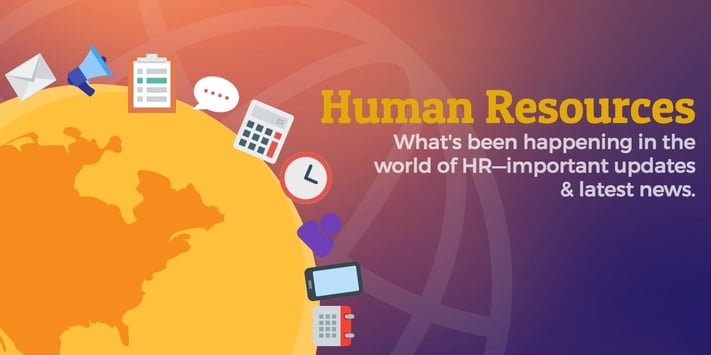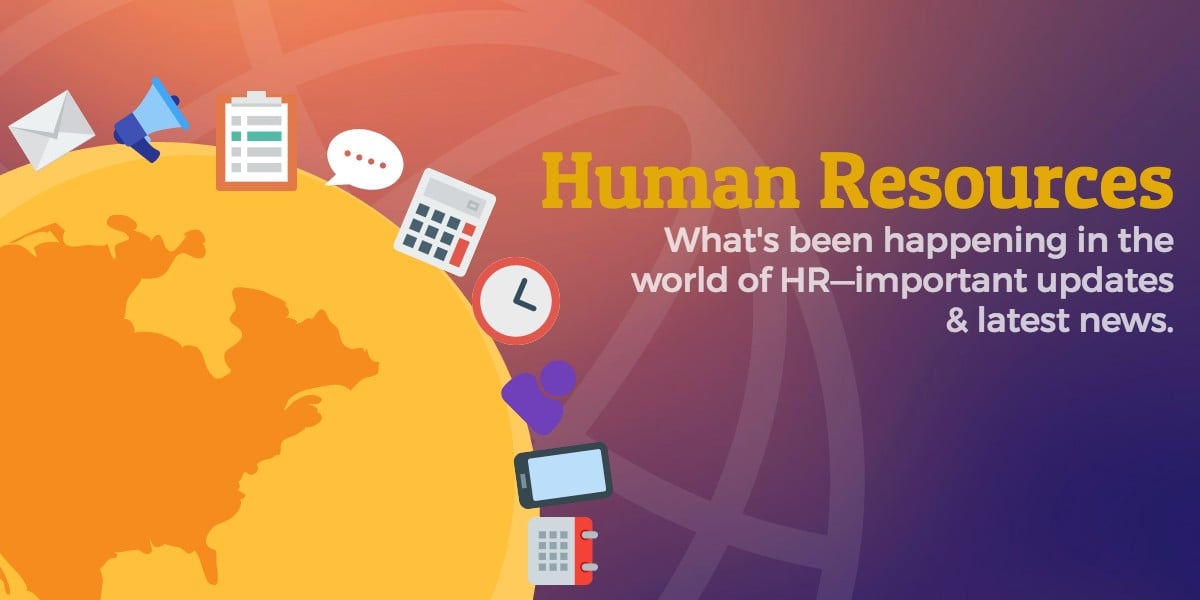 What’s been happening in the world of HR lately? Honestly, what hasn’t? If you’ve been keeping an eye on the news and compliance issues, you know plenty has been going—and it seems to be constantly changing. In our latest HR Roundup, we look at where we are with the FLSA overtime rule, how employers are evolving with workplace trends, what we can learn from Uber’s HR nightmare, and who has got the best company culture in America—and the ACA is sticking around too.
What’s been happening in the world of HR lately? Honestly, what hasn’t? If you’ve been keeping an eye on the news and compliance issues, you know plenty has been going—and it seems to be constantly changing. In our latest HR Roundup, we look at where we are with the FLSA overtime rule, how employers are evolving with workplace trends, what we can learn from Uber’s HR nightmare, and who has got the best company culture in America—and the ACA is sticking around too.
ACA Remains Law of the Land
In a strange turn of events, on Friday, March 24, House Republican leaders withdrew the GOP health care bill after being unable to garner enough votes to support it. This bill, the American Health Care Act, served as the Republicans’ efforts to repeal and replace the Affordable Care Act.
For now, the ACA remains in place as the law of the land. Applicable Large Employers will still be held accountable for the shared responsibility mandate to offer affordable health care plans to all full-time employees and their dependents.
As the GOP faces extreme pressures from conservatives, the House Republicans have returned to the drawing board to develop another bill that would repeal and replace the ACA. Because of a number of other issues the House currently faces, it could be awhile before they return to the AHCA bill. As Speaker Paul Ryan said in a statement after Republicans pulled the bill, the Affordable Care Act will remain in place “for the foreseeable future.”
FLSA Overtime Rule Could Face a “Restart & Redo”
Update: As of July 1, 2024 changes have been implemented to the Fair Labor Standards Act. For most up to date information, visit the Department of Labor website or schedule a consultation with Fuse.
Another player enters the FLSA overtime rule game. During a confirmation hearing, Department of Labor Secretary nominee Alexander Acosta indicated his support of increasing the salary threshold with inflation. Currently, the FLSA regulations mark the threshold for exempt workers at $23,660 annually. The final rule would have increased this salary threshold to $47,476 annually, giving a possible four million additional U.S. workers eligibility for overtime pay.
After accounting for inflation to the cost of living since 2004 (when the rule was last updated), Acosta believes “the salary threshold figure would be somewhere around $33,000." An increase from the current rule but not as extreme as the rule the Obama administration proposed.
Acosta is aware of both the impact on the economy and lower-wage regions as well as the lack of salary adjustment in over a decade. While he didn’t show his cards regarding the pending litigation, Acosta wants to prove he is approaching the issue mindfully and will likely revise the rule that was scheduled to take effect December 1, 2016 before a judge ordered a last-minute injunction.
A long road could still be ahead for employers and the FLSA overtime rule. The Trump administration could do a “restart and redo” for the rule requiring the DOL to propose an administrative delay of the Obama administration rule. Then, they must give notice of a proposed rulemaking and comment period for a new final rule.
SHRM and Families & Work Institute Release National Study of Employers
After surveying over 900 employers (with 50+ employees), the Families and Work Institute and the Society for Human Resources Management (SHRM) released the National Study of Employers as part of the When Work Works initiative. The study takes a look into employer practices, policies, and programs for their employees and families. As work demographics and dynamics continue evolving across America, this study evaluates some of the most important issues affecting workers in the U.S. today including, paid and unpaid leave, work flexibility, employee benefits, and elder care assistance.
Here are some of the key findings:
Small employers (50-99 employees) are more likely than large employers (1000+ employers) to offer flexible work arrangements including start and stop times, flex hours, and break times.
Over the last four years, workplace flexibility has grown steadily, changing in only four of the 18 areas surveyed. The areas of growth include teleworking on a regular basis, gradual return to work after childbirth or adoption, and special consideration after a significant break for family reasons. The number of employers who allowed employees to take time off during the workday to attend to family needs without loss of pay has decreased since 2012.
Uber and the HR nightmare
If you’re looking for an example of what not to do in HR, go ahead and take a look at Uber, the ridesharing app.
You’ve probably heard about the events surrounding a former site reliability engineer for Uber, Susan Fowler Rigetti. Many details about the harassment allegations came public when Fowler wrote about her “very, very strange year at Uber.” In her reflection, Fowler discusses the illegal activities and behaviors from fellow employees that ultimately led to more than questionable responses from HR.
How does a company like Uber let this happen? It’s clear the company’s leaders put higher priority on recruitment in HR than compliance and development. In an article for the Harvard Business Review, John Boudreau puts it this way, “When HR becomes solely a talent race, boards and CEOs can miss the less obvious but equally vital value of managing both new hires and leaders who are facing increasing demands.”
He encourages companies to learn from Uber’s mistakes and resist the temptation for HR to focus only on what shows numbers to the executive team (like recruiting). When you focus on one issue and neglect issues like harassment, they will be seen as acceptable in the workplace culture. When’s it’s accepted, it’s perpetuated and makes it that much harder to deal with once you get around to it.
“If checks and balances are established early, they can be seen as fundamental to organizational growth and value. In this way, high-profile investigations may never be necessary, because a word from HR will be enough to nip things in the bud,” Boudreau adds.
Entrepreneur releases the Best Company Cultures in America
We all know company culture is important for employee engagement and your bottom line, yet so many companies still fail to have good culture in the workplace. Why is that? For starters, culture doesn’t just happen. Culture is developed over time. Company culture is developed with intention over time. Some companies work hard to achieve this and we can learn a lot from them.
Entrepreneur partnered with CultureIQ to find the best workplace cultures in offices across America. To determine this, they measured ten areas that are predictive of high-performing cultures: collaboration, innovation, agility, communication, support, wellness, work environment, responsibility, performance, and mission alignment.
After surveying thousands of companies across the U.S., they narrowed it down to 50 winners in three business sizes (plus a tie, bringing the total to 153). Belay virtual assistants took first place in the small business category. Coming in first place in the medium-size business category is Fusion Medical Staffing, an employment agency specializing in placing candidates in the healthcare industry. Last but not least, the mattress startup Tuft & Needle ranked number one in company culture for large businesses.
How does your business rank for company culture?
